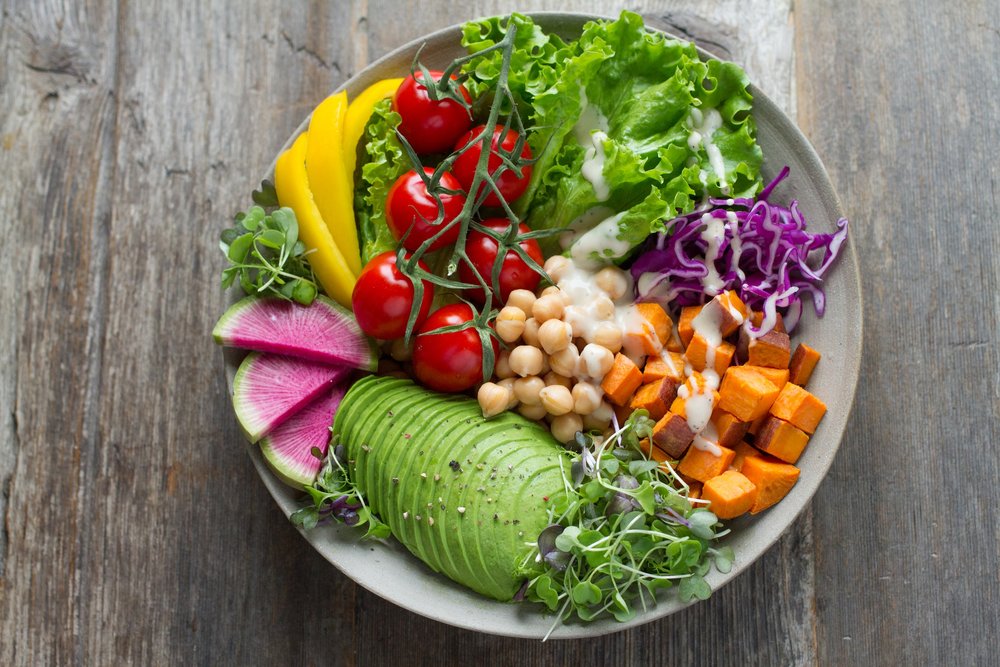What actually is clean eating? If this is something you’ve asked yourself, then you’ve come to the right place. We’re going to be discussing exactly what clean eating is (and isn’t) and how you can adopt a clean eating lifestyle to improve your health and well-being in just a few simple steps.

View it as a lifestyle change, rather than a diet.
The first thing to say when it comes to the topic of clean eating is that it’s actually more of a lifestyle than a diet. Whilst that might sound like a cliché, it simply means that eating clean should be viewed as a different approach to what you eat and why you should eat it. Unlike fad diets that claim they can help you achieve instantaneous weight loss by following a few gruelling rules, clean eating Is about making better more nutritious choices for your body.
It’s about choosing to steer clear of unnecessary fats, sugars and processed foods. It’s about taking a more conscious approach to prioritising whole foods that have nutritional value and seeing “junk” food for what it really is…junk. (Junk in this context includes highly processed foods that are high in sugar, salt, and saturated fat and have no nutritional value).
It’s about you taking control.
Despite what you may think, eating clean isn’t all about restriction or counting calories. Once you actively view things from a clean eating mindset, you will find yourself not wanting to get sucked into those cravings for processed sugars, salts and fats that your body doesn’t need. Instead, you’ll be choosing foods with nutritional value, foods that will give you energy and focus, whilst providing you with a sense of accomplishment. Just try it for a week and you’ll soon see that eating clean gets easier and easier and before you know it, it will be second nature.
It’s time to get in the kitchen.
One of the easiest ways to know exactly what is going into your meals is to choose your ingredients and prepare them yourself. Cooking for yourself will enable you to monitor how much salt, sugar and fat goes into your meals. In order to have a healthy diet, we need to be eating the right amount of calories for how active we are, this balances the energy we consume with the energy we use. Eating or drinking more than what our body needs will result in weight gain, as the energy that isn’t being used is stored as fat. If you burn more energy than you consume, it will result in weight loss. This is why cooking our own meals as much as possible is a great way to know exactly what and how much we are eating. If you want some inspiration for some quick and healthy meals click here: Healthier Eating.

Eat more whole foods
Let’s cut to the chase, whole foods are foods that haven’t been processed or altered in a factory. This means that they have no preservatives, artificial flavours, sugars, salt or fats added to them to improve their flavour and appearance or increase shelf life.
Some examples of whole foods include fresh fruits and vegetables, full-fat dairy products, beans, legumes, lean proteins, whole grains and unsalted nuts. These unprocessed foods are packed full of fibre and nutrients, which is what the body needs in order to be able to function correctly.
Avoid processed foods
Processed foods are easy to spot because they are often packaged in a box, jar or sealed packet. More often than not, processed foods are high in added sugar, fat and salt and low in fibre. Some examples of processed foods include crisps, biscuits, frozen meals, canned soup, instant noodles, and sweets. Choosing not to eat these foods doesn’t mean you have to go hungry, there are plenty of nutritious alternatives that you could either make yourself. Opt for a fruit salad, homemade granola bar or a handful of unsalted nuts instead.


